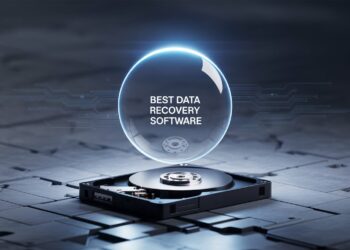Ransomware attacks have evolved from isolated, opportunistic strikes into a global criminal enterprise fueled by professionalized operations and profit-sharing models. Among these developments, Ransomware-as-a-Service (RaaS) has emerged as one of the most disruptive trends in cybersecurity.
In simple terms, RaaS operates like a business franchise model for cybercrime — enabling even low-skilled attackers to execute sophisticated ransomware campaigns by leasing ready-made tools from expert developers. This democratization of cyberattacks has dramatically increased both the scale and complexity of ransomware incidents worldwide.
This article, “Ransomware-as-a-Service Explained: Latest Trends,” explores how RaaS works, the economic ecosystem behind it, new tactics shaping 2024, and practical steps organizations can take to defend themselves against this fast-evolving threat.
What Is Ransomware-as-a-Service?
Ransomware-as-a-Service (RaaS) refers to the commercialization of ransomware tools and infrastructure. Instead of writing malicious code from scratch, attackers can now purchase or subscribe to pre-built ransomware kits on dark web marketplaces.
These offerings mirror legitimate Software-as-a-Service (SaaS) models — complete with customer support, user dashboards, payment processing systems, and profit-sharing arrangements between developers and affiliates. The structure lowers entry barriers for cybercriminals, expanding participation in ransomware operations to anyone with access to the dark web.
The RaaS Ecosystem
The RaaS ecosystem typically involves four primary roles:
-
Developers: Skilled programmers who create and maintain the ransomware code, manage encryption keys, and maintain backend servers.
-
Affiliates: Individuals or groups who rent the ransomware and distribute it using phishing, social engineering, or exploit kits.
-
Operators: Administrators who handle negotiations, payments (often in cryptocurrency), and decryption key distribution.
-
Victims: Organizations or individuals whose systems are encrypted and held hostage until a ransom is paid.
This structure resembles a legitimate business model — complete with revenue splits, performance incentives, and even customer service for affiliates.
How Ransomware-as-a-Service Works
RaaS typically follows a predictable cycle, broken into several stages:
1. Access and Delivery
Affiliates infiltrate a target network using phishing emails, stolen credentials, or vulnerabilities in public-facing systems.
2. Deployment
Once inside, the affiliate downloads and executes the rented ransomware payload. The software encrypts critical files, often disabling backups and system recovery tools.
3. Communication and Extortion
Victims receive ransom notes containing payment instructions, usually demanding cryptocurrency. Some RaaS groups run dedicated “customer portals” for negotiation.
4. Profit Sharing
After a successful payment, funds are divided between the affiliate and the RaaS developer — commonly in ratios between 70/30 and 80/20, depending on the service agreement.
This scalable structure has turned ransomware into a thriving underground economy worth billions of dollars annually.
Ransomware-as-a-Service Explained: Latest Trends
As of 2024, Ransomware-as-a-Service Explained: Latest Trends reveals that the ecosystem is maturing rapidly. Cybercrime groups are behaving more like corporations than rogue hackers, employing sophisticated marketing tactics and offering subscription-based pricing.
Below are the most notable developments shaping today’s RaaS landscape.
1. Professionalization and Service Tiers
Many RaaS operations now offer tiered membership levels. For example, entry-level affiliates may gain access to basic toolkits, while “premium” members receive advanced exploit packs, analytics dashboards, and 24/7 technical support.
Some RaaS operators even provide customer satisfaction guarantees — pledging functioning decryption keys after payment or refunding affiliates for failed campaigns.
2. Double and Triple Extortion
Traditional ransomware focused on encrypting files. Today’s RaaS groups add double extortion — exfiltrating data before encryption and threatening to leak it publicly if payment is withheld. Some go further with triple extortion, targeting customers, suppliers, or partners of the original victim to increase pressure.
This shift amplifies reputational damage, making data privacy a central concern in ransomware negotiations.
3. Focus on Critical Infrastructure and Healthcare
Healthcare systems, energy providers, and government agencies have become prime targets due to their reliance on uptime and sensitive data. Attackers know these organizations are more likely to pay quickly to restore operations.
In 2024, analysts observed increased RaaS campaigns targeting hospitals, manufacturing, and logistics — sectors essential to public safety and supply chains.
4. Affiliate Consolidation
The number of RaaS operators has decreased, but their scale has expanded. Consolidation mirrors legitimate market trends: fewer but more powerful groups with established brand reputations and loyal affiliate bases.
Examples include major ransomware families that rebrand under new names to evade sanctions or law enforcement while retaining their affiliate networks.
5. Cryptocurrency Laundering Innovations
Law enforcement has become more adept at tracking Bitcoin transactions. In response, RaaS operators now use privacy-focused cryptocurrencies like Monero, as well as cryptocurrency mixers and decentralized exchanges, to obscure transaction trails.
6. Integration of Artificial Intelligence
Emerging evidence suggests that some threat actors use AI tools to enhance phishing campaigns and automate target selection. AI-driven reconnaissance improves the efficiency of ransomware delivery, making attacks faster and harder to detect.
The Economics of Ransomware-as-a-Service
Understanding the financial motivations behind RaaS helps illustrate its resilience.
Component |
Typical Range / Description |
|---|---|
Subscription cost |
$50–$1,000 per month, or revenue-sharing (20–30%) |
Average ransom demands |
$100,000 – $5 million, depending on target size |
Affiliate share |
60–80% of ransom payout |
Developer earnings |
Residual commissions, updates, and private builds |
Support offered |
Technical support, dashboards, leak sites, and analytics |
This structure incentivizes affiliates to continuously improve delivery methods, while developers focus on refining ransomware features — creating a feedback loop that drives constant innovation.
Impact on Organizations
1. Financial Loss
Ransom payments, downtime, and recovery costs can cripple smaller organizations. In 2024, average recovery expenses per incident exceeded $1.8 million, even when the ransom was unpaid.
2. Reputational Damage
Double extortion leaks can expose customer data, damaging trust and compliance with regulations like GDPR or HIPAA.
3. Operational Disruption
Manufacturers and hospitals often experience halted production lines or delayed treatments, leading to tangible harm and legal exposure.
4. Regulatory Consequences
New government frameworks require disclosure of ransomware payments and breaches. Non-compliance may lead to fines and public scrutiny.
Defensive Strategies Against RaaS
Protecting against RaaS demands a multilayered approach combining technology, policy, and human awareness.
1. Strengthen Perimeter Security
-
Patch operating systems and applications promptly.
-
Disable unused remote desktop protocol (RDP) ports.
-
Employ strong password policies and multifactor authentication (MFA).
2. Improve Detection and Monitoring
Deploy Endpoint Detection and Response (EDR) or Extended Detection and Response (XDR) tools to identify unusual encryption activity or privilege escalation.
3. Backup and Recovery
Maintain encrypted, offline backups isolated from the network. Test restoration processes regularly to ensure business continuity after an attack.
4. Employee Awareness
Train staff to recognize phishing attempts and report suspicious emails. Human error remains the leading entry point for ransomware.
5. Incident Response Planning
Create a detailed incident response playbook outlining containment, communication, and recovery procedures. Include contact information for law enforcement and cyber-insurance providers.
6. Cyber Insurance and Legal Preparation
Ensure your cyber insurance policy covers ransomware incidents, including legal costs, recovery, and negotiation support.
Global Law Enforcement and Policy Response
Governments are increasing their focus on dismantling RaaS operations. International task forces have coordinated high-profile takedowns of major ransomware groups, seizing servers, and freezing cryptocurrency assets.
Additionally, new regulations now discourage or even prohibit ransom payments in certain jurisdictions, aiming to reduce criminal profitability. Organizations are encouraged to report incidents promptly and cooperate with investigative agencies.
Preparing for the Future: Cyber Resilience Framework
Cyber resilience means assuming breaches will happen and planning for rapid recovery. Startups and enterprises alike can strengthen resilience by implementing:
-
Zero-trust architecture: Verify every connection and limit lateral movement.
-
Continuous threat hunting: Identify indicators of compromise (IOCs) before encryption occurs.
-
Data segmentation: Isolate sensitive data from broader networks.
-
Vendor risk management: Ensure third-party partners meet your cybersecurity standards.
Combining proactive prevention with fast recovery capabilities minimizes both downtime and data loss when RaaS strikes.
Frequently Asked Questions (FAQs)
1. What does Ransomware-as-a-Service mean?
Ransomware-as-a-Service is a cybercrime model where ransomware developers lease their malicious software to affiliates, who then launch attacks and share profits with the developers.
2. Why is RaaS so dangerous?
It lowers the barrier to entry for cybercriminals. Even attackers with limited technical skill can rent sophisticated tools, making ransomware more widespread.
3. What are the latest RaaS trends?
Key trends include double extortion tactics, targeting of healthcare and infrastructure, affiliate consolidation, and the use of AI for attack automation.
4. Can small businesses be targeted by RaaS?
Yes. RaaS campaigns often target small and medium-sized businesses that lack mature security defenses but still hold valuable data.
5. Should victims pay the ransom?
Law enforcement advises against paying ransoms. Payment doesn’t guarantee data recovery and may fund future attacks.
6. How can organizations defend against RaaS?
Adopt a layered defense strategy—regular patching, MFA, secure backups, employee training, and incident response planning.
7. Is ransomware covered by cyber insurance?
Most cyber insurance policies offer ransomware coverage, but terms vary. Always review policy details before an incident occurs.
Conclusion
As cybercrime becomes increasingly commercialized, Ransomware-as-a-Service Explained: Latest Trends underscores a stark reality: ransomware is no longer the domain of elite hackers. It’s an organized, profitable business model that threatens every sector.
To combat this evolving menace, organizations must combine robust technical defenses with strong governance, employee vigilance, and well-tested recovery plans. Cyber resilience — not just prevention — will define which businesses survive in the era of ransomware-as-a-service.
By understanding the structure, economics, and current trends of RaaS, companies can stay one step ahead of attackers and protect their most valuable digital assets.






